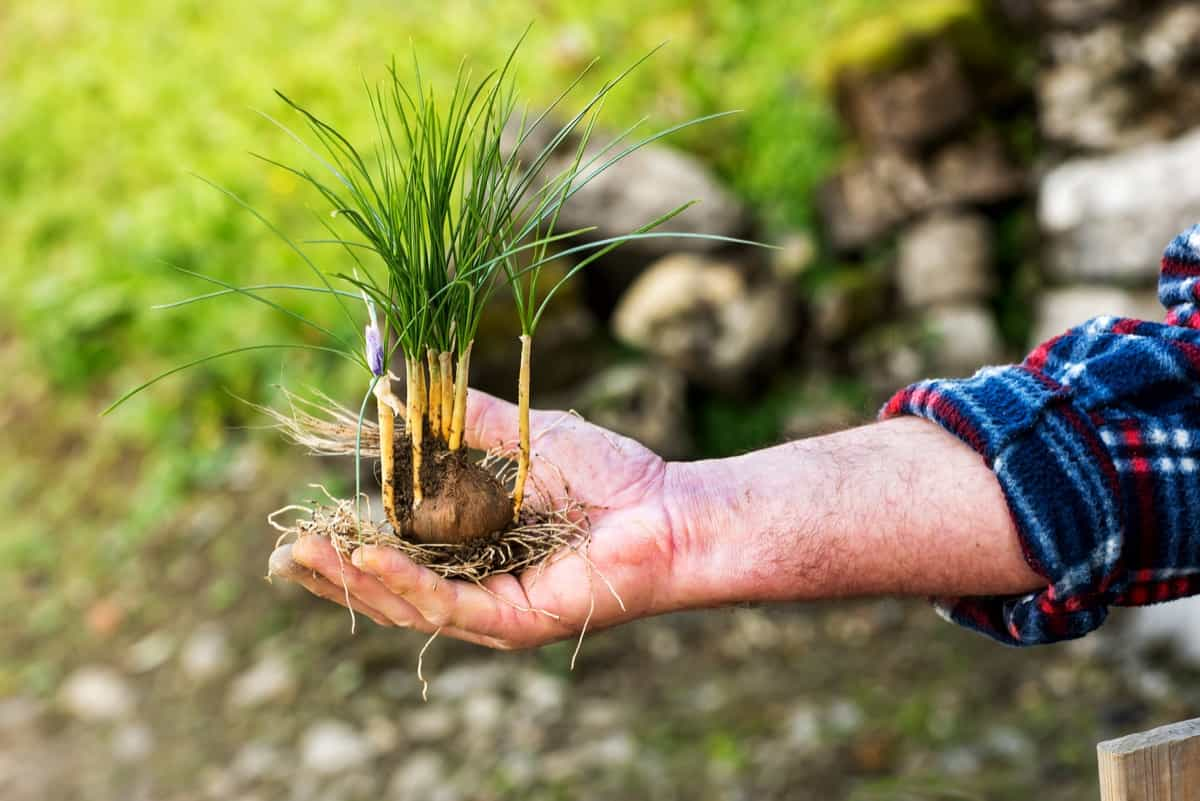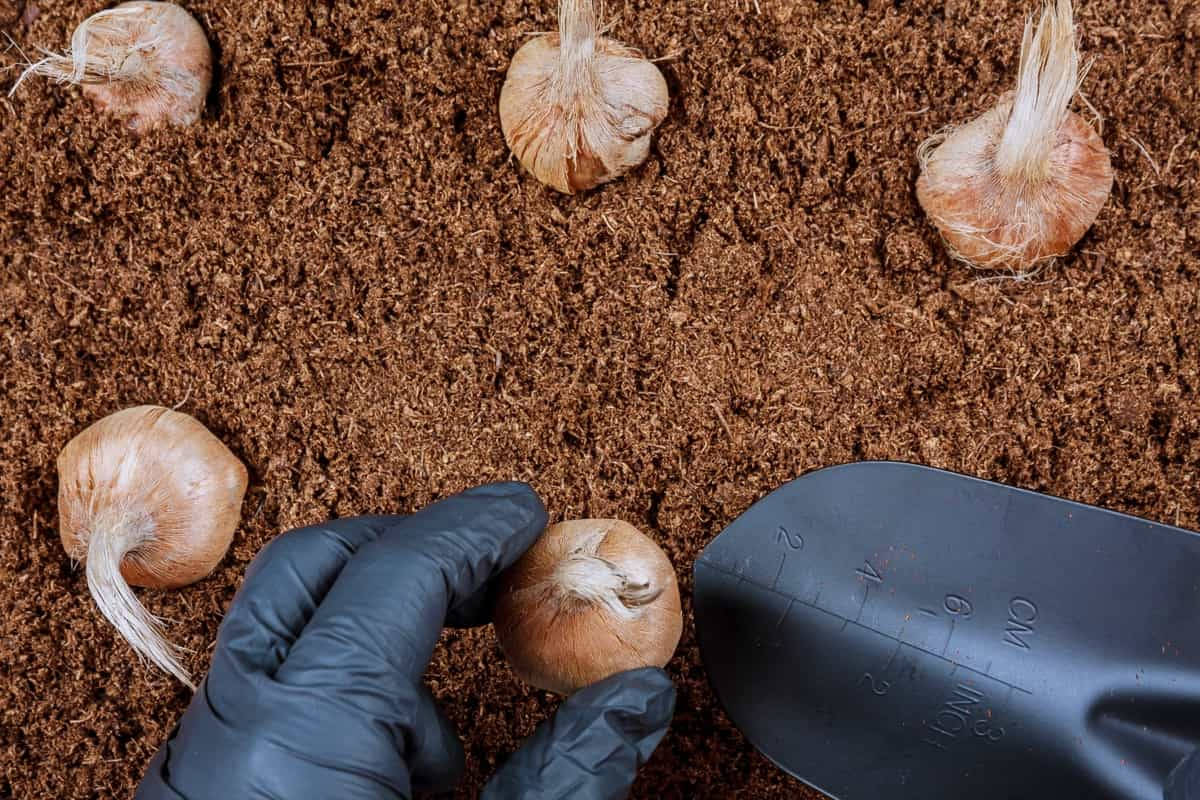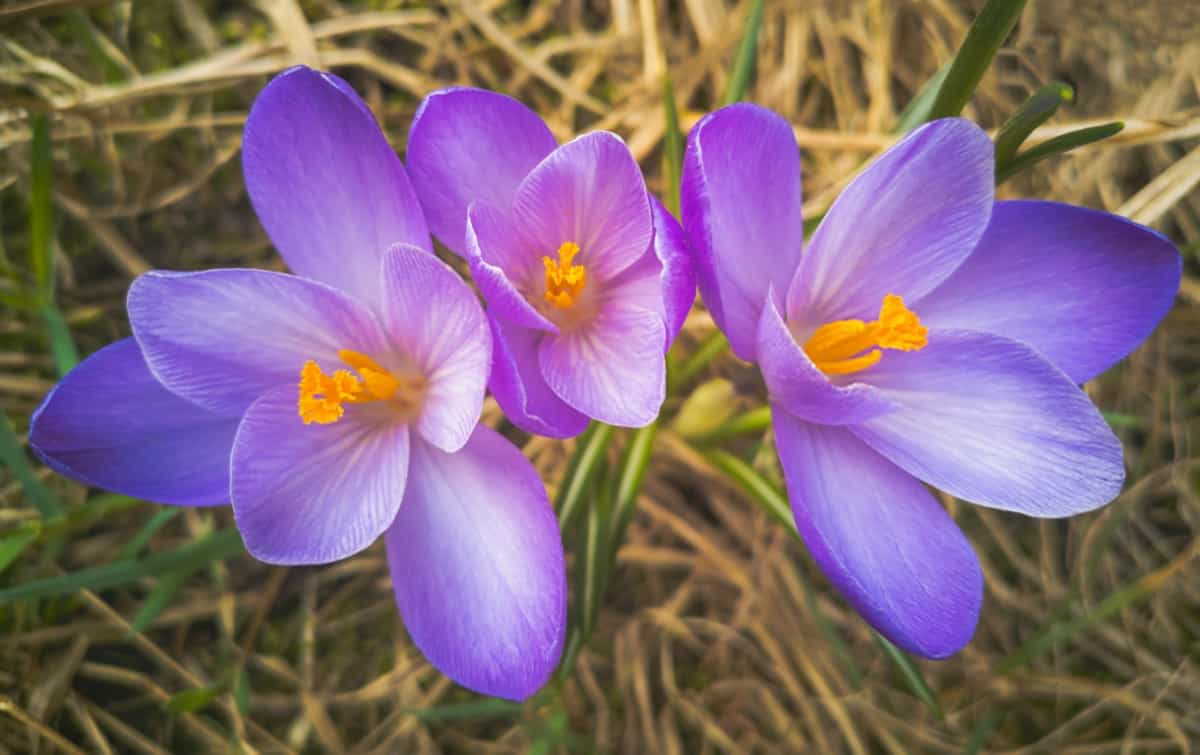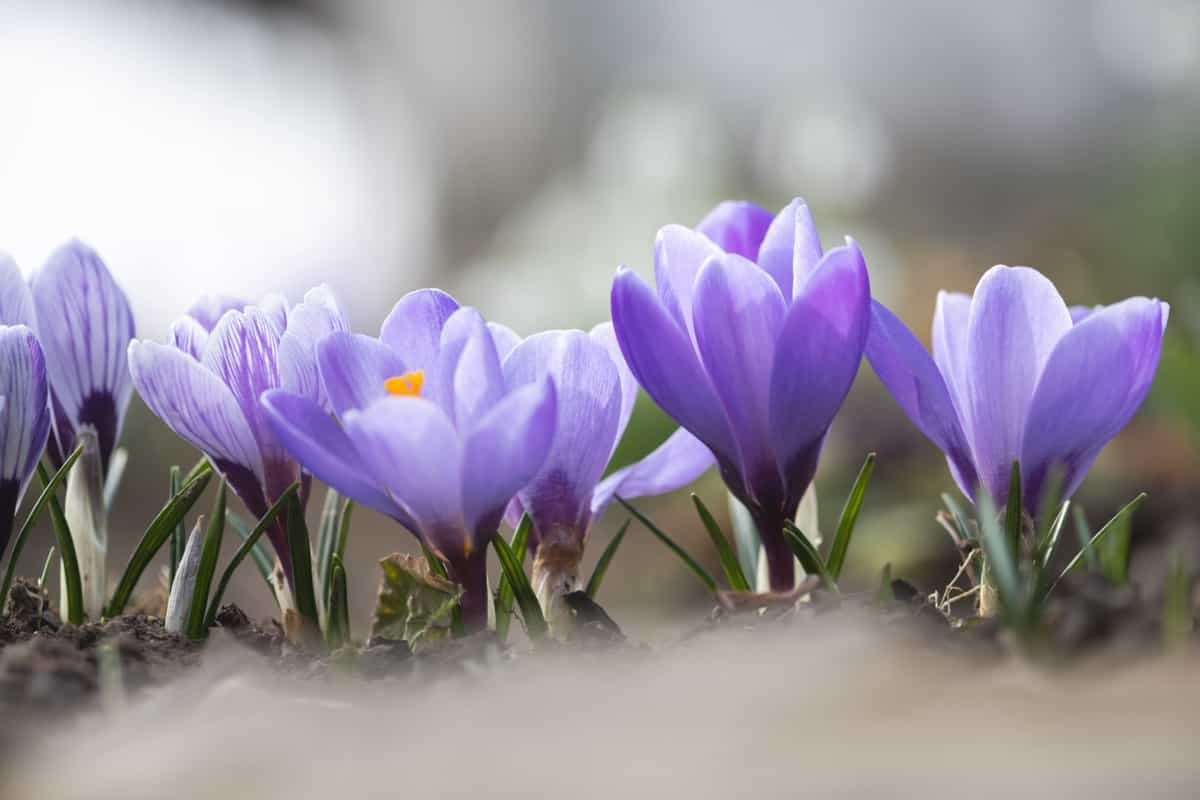You can ensure a higher yield of this precious spice by taking the time and effort to propagate Saffron bulbs. The main advantage of propagating Saffron bulbs is expanding your Saffron production. With each bulb that successfully sprouts into a new plant, you increase your overall crop size and potentially boost your profits. Propagating Saffron bulbs is essential for maximizing yield and ensuring a bountiful harvest.

How to Propagate Saffron Bulbs
Understanding Saffron Bulbs Propagation
Saffron bulb propagation is multiplying Saffron bulbs to increase your yield. Propagation begins with selecting the right bulbs for reproduction. Understanding the process of Saffron bulb propagation is crucial before diving into the best practices. Saffron bulbs are typically planted in the fall, allowing them to establish their root system during winter. Propagating Saffron bulbs for maximum yield is of utmost importance for Saffron farmers and enthusiasts alike. By propagating the bulbs, you can ensure a continuous supply of this precious spice and maximize your harvest.
Selecting the Right Bulbs for Propagation
It is a crucial step in ensuring maximum yield when growing Saffron. Quality matters when it comes to Saffron bulbs; look for large, firm bulbs with a good amount of weight. These are signs of healthy and robust bulbs that will have a higher chance of sprouting successfully. It’s also essential to choose bulbs that have not been previously used for flowering. Saffron plants produce fewer flowers and lower yields after blooming once.
So, opt for fresh bulbs that haven’t already gone through the flowering process. Another factor to consider when selecting Saffron bulbs is their origin. Pay attention to the size of the corms attached to the bulb. Corms are small underground storage organs that develop from bud tissues during dormancy. Larger corms generally indicate stronger growth potential and better flower production.
Preparing the Soil for Saffron Bulb Propagation
The soil quality directly affects the bulbs’ nutrient absorption, root development, and overall health. Therefore, it is essential to prepare the soil properly before planting. Start by choosing a well-draining soil that is rich in organic matter. Remove any weeds or debris from the area where you plan to propagate Saffron bulbs. Testing your soil’s pH levels before planting Saffron bulbs is also advisable. Saffron thrives best in slightly acidic soils with a pH ranging from 6 to 7.
In case you missed it: Soil and Climate Requirements for Saffron Farming

Planting Saffron Bulbs
Following the best practices for planting Saffron bulbs is essential to ensure successful growth and maximum yield. Before planting, make sure you have selected high-quality bulbs from a reputable source. Look for firm, plump bulbs with no signs of rot or disease. When it comes time to plant the bulbs, dig small holes about 3-4 inches deep and place the bulb in the hole. Space them about 4-6 inches apart to allow room for growth.
Cover the bulbs gently with soil and pat down lightly. During the planting process, remember that Saffron requires total sun exposure to thrive. To protect your Saffron plants from pests and diseases during propagation, consider using natural pest control methods such as beneficial insects or companion planting techniques.
Caring for Saffron Bulbs During Propagation
- Adequate sunlight: Saffron bulbs require at least six hours of direct sunlight each day. Select a spot in your garden or yard that receives ample sunlight throughout the day.
- Well-draining soil: Saffron bulbs prefer well-draining soil to prevent waterlogging, which can lead to bulb rot. Ensure the soil has good drainage by adding organic matter such as compost or sand.
- Protection from extreme temperatures: Saffron bulbs are sensitive to extreme heat and cold. Provide shade during hot summer days and cover it with mulch or straw in winter if necessary.
Watering Techniques for Saffron Bulb Propagation
Properly watering the bulbs ensures their healthy growth and maximum yield. One technique is to water deeply but infrequently. This boosts the plant roots to grow deeper into the soil in search of moisture, making them resilient and less dependent on frequent watering. Another technique is drip irrigation or soaker hoses instead of overhead sprinklers. Remember that each garden’s conditions vary, so adjust your watering schedule based on climate, rainfall patterns, and specific soil characteristics.
Fertilizing Saffron Bulbs During Propagation
It provides essential nutrients that support their growth and development. However, following the best practices to ensure maximum yield is necessary. When fertilizing Saffron bulbs during propagation, timing is key. The first application should be done shortly after planting the bulbs.
In case you missed it: How to Create a Saffron Farming Business Plan: From Cultivation to Marketing

During the early stages of growth, it’s essential to provide regular feedings every two weeks until flowering occurs. This helps promote healthy bulb development and encourages increased flower production. Organic fertilizers are highly recommended for Saffron bulb propagation as they provide essential nutrients and improve soil health and fertility.
Protecting Saffron Bulbs from Pests and Diseases During Propagation
These tiny bulbs are vulnerable to threats that can hinder their growth and reduce yield. Watching for common pests such as aphids, thrips, and mites is essential. Regularly inspect your Saffron plants for signs of infestation, like yellowing leaves or distorted growth. In addition to pests, fungal diseases like root rot and bulb rot can also threaten Saffron bulb propagation.
To prevent these issues, ensure your planting area has good drainage and avoid overwatering. Remember that prevention is key regarding pest and disease management during propagation. Regular monitoring and maintaining optimal growing conditions will go a long way in ensuring healthy Saffron bulb development.
Harvesting Saffron from Propagated Bulbs
Harvesting Saffron from propagated bulbs is an exciting and rewarding process. After months of careful care and nurturing, it’s finally time to reap the fruits of your labor. The key is to wait until the flowers have fully bloomed and their vibrant red stigmas have emerged. This usually occurs in the early morning hours. Gently pluck each stigma from the flower using tweezers or your fingertips, careful not to damage them.
Once you have collected enough stigmas, it’s time to dry them. Spread them on a clean paper towel or tray and place them in a cool, well-ventilated area away from direct sunlight. Allow them to air dry completely for about two weeks. After drying, store your precious Saffron strands in an airtight container away from light and moisture. Properly stored Saffron can retain its flavor and potency for up to two years.
Storing and Maintaining Saffron Bulbs After Propagation
Proper storage techniques will help preserve the quality of the bulbs, allowing you to enjoy a bountiful harvest for years to come. After harvesting the Saffron threads from your propagated bulbs, cleaning them thoroughly by removing any dirt or debris is essential. Gently brush off excess soil and trim any dead or damaged leaves before storing. The next step is drying the Saffron bulbs.
In case you missed it: Project Report of 1-Acre Saffron Farming: Production Cost and Profit Analysis, Cultivation Economics

This can be done by spreading them out in a well-ventilated area away from direct sunlight. Ensure they are not overcrowded, which can lead to moisture buildup and potential rotting. Once completely dried, it’s time to store the Saffron bulbs properly. The best way is to place them in a cool location, such as a dark pantry or cellar. Use breathable containers like mesh bags or paper bags instead of plastic, allowing air circulation and preventing condensation.
Frequently Asked Questions (FAQ) on Propagate Saffron Bulbs
When is the Best Time to Propagate Saffron Bulbs?
The ideal time to propagate Saffron bulbs is late summer or early autumn. This gives the new corms enough time to establish themselves before winter.
Can I Propagate Saffron Bulbs Indoors?
You can use pots or containers filled with well-draining potting mix to propagate Saffron bulbs indoors. Make sure they receive adequate sunlight or use grow lights if needed.
Should I Water My Newly Propagated Saffron Regularly?
While it’s important not to overwater your newly propagated Saffron, ensure they receive enough moisture during their growth period without saturating them.
Conclusion
Saffron, the vibrant spice derived from the Crocus sativus flower, is renowned for its unique flavor and exquisite aroma. Propagation also plays a vital role in maintaining the quality of Saffron bulbs. As bulbs age, their productivity decreases, resulting in smaller yields. Regularly propagating fresh Saffron bulbs from healthy parent plants can rejuvenate your Saffron field and achieve maximum yield potential.
- Ultimate Guide to Ossabaw Island Hog: Breeding, Raising, Diet, and Care
- Ultimate Guide to Juliana Pig: Raising Facts, Size, Diet, Care, and Lifespan
- Raising Lleyn Sheep: Disadvantages, Price, Uses, Characteristics, and Care
- Ultimate Guide to Meishan Pig: Breed Facts, Breeding, Raising, and Care
- Ultimate Guide to Teacup Pigs: Raising, Diet, Lifespan, Cost, and Care
- Guide to Raising Poll Dorset Sheep: Facts, Profile, Characteristics, Uses, and Care
- Ultimate Guide to Bighorn Sheep: Characteristics, Diet, Lifespan, Breeding, and Lifecycle
- Ultimate Guide to Raising Katahdin Sheep: Farming Facts, Breed Profile, Uses, and Care
- Ultimate Guide to Raising Oreo Cows: Belted Galloways Farming Facts, Profile, Uses, and Care